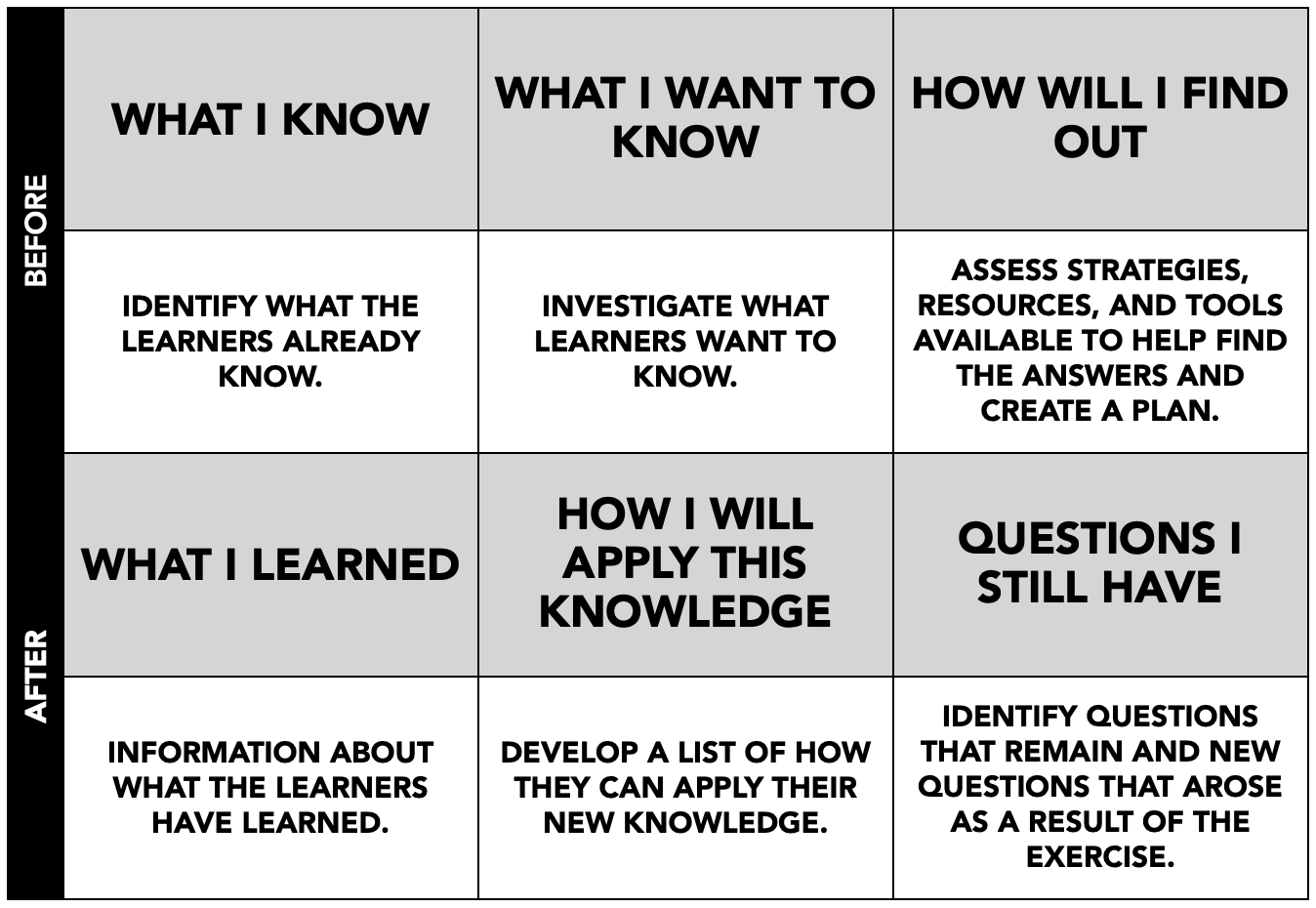KWHLAQ Chart
A KWHLAQ chart is a teaching tool that helps organize thoughts and ideas, before, during, and after a learning exercise.
It is a simple but effective instructional technique which puts the learner at the center of inquiry-based learning.
With KWHLAQ, learners first identify what they know about a topic. Then, they think about what they want to research or learn. After the lesson, they then reflect on what they have learned.
Specifically, KWHLAQ asks the following questions –
K – What learners already KNOW about a topic.
W – WHAT learners want to learn or find out.
H – HOW learners will research or find the information they want to learn.
L – What learners have LEARNED about the topic after taking action.
A – How will learners APPLY the knowledge they’ve learned.
Q – What QUESTIONS learners still have or have thought of as a result of the learning exercise.
How to Use a KWHLAQ Chart –
Set the topic for the KWHLAQ exercise and define the objective and the scope.
Discuss how learners will benefit from learning about the topic and why it’s important.
Introduce information, concepts, and questions/prompts that could help learners with the brainstorming process.
Learners brainstorm what they already know about the topic in the “What I KNOW” column of the KWHLAQ template.
This is a wonderful opportunity for learners to share their current knowledge.
Learners then consider what more they would like to discover about the subject and fill out the “What I want to KNOW” section of the KWHLAQ table.
Next, ask learners to populate the “HOW I will find out” column with ideas about how they will find the answers they need.
This is a perfect way to check for learner comprehension and to give them more guidance as to how to find reliable and accurate information.
Promote higher order thinking by collating and sharing all the ideas with the group for discussion. Give feedback, address misconceptions, and ask clarifying questions.
Learners can now research the information, or the teacher can run the lesson as needed.
After the learning phase, have learners brainstorm what knowledge they have gained and complete the.”L-What I learned” column of the KWHLAQ chart.
Ideally, by the end of the study, all the areas in the “W-What I want to know” have been addressed, any misconceptions in column “K- What I know” are clarified, and the learners have acquired the knowledge of the subject they want and needed.
Learners should try and identify how they will utilize their new knowledge and what actions they should take moving forwards.
Depending on the topic and outcomes, learners may be able to apply the new knowledge to other subject areas, or even their personal lives.
Document these ideas in the “A-How I will Apply this knowledge” column.
Finally, ask learners to identify those areas they still have questions about, and reveal any new questions that have arisen as a result of the learning exercise.
These ideas go in the “Q – Questions I still have” column of the KWHLAQ template.
A group discussion and exchange of ideas will likely clarify some knowledge gaps.
Here’s an example of a completed KWHLAQ Chart –


